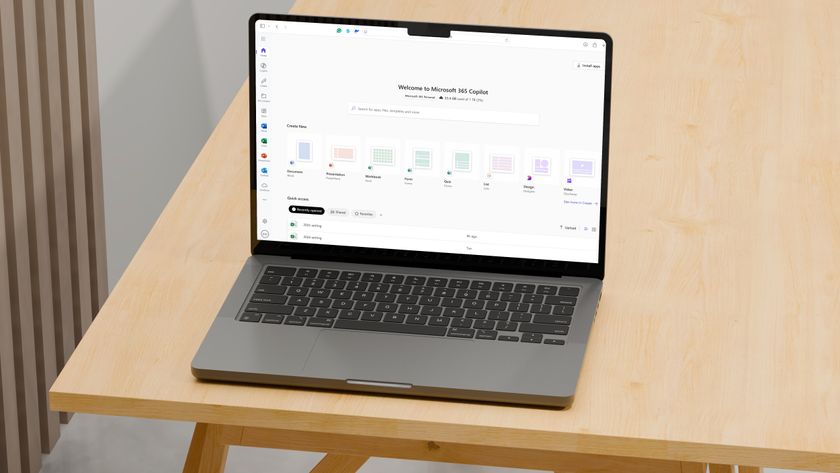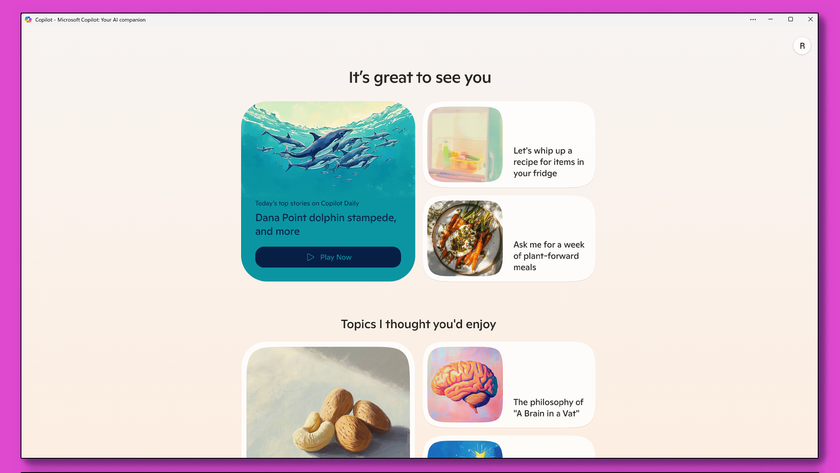How can CRM software help me improve customer relationships?
Learn how a CRM can boost your customer relationships

Businesses rely on trust and building strong connections with their customers. One of the most powerful ways to do that is through a customer relationship management (CRM) tool. The best CRM software puts the customer front-and-center, so you can optimize your marketing and sales processes to drive conversions and boost revenue.
There are some excellent CRM tools out there. Once you’ve chosen the right CRM platform for your small business, and implemented it in an effective way, it’s time to roll up your sleeves.
We’ve got you. These helpful nuggets of information will improve customer interactions, optimize your processes, and increase your bottom line.
Choose the best CRM software for business
The right CRM technology platform will provide you with the framework, measurements, and tools you need to transform customer relationships. Depending on your needs, we’ve written some very helpful buyer’s guides so you can make an informed choice, including the best CRM for real estate businesses and the best free CRM software platforms.
Understand why it’s important to improve customer relationships

Why should you care about improving customer relationships in the first place? We believe it comes down to several areas.
Customers are increasingly looking for authentic businesses and brands that they can trust. You build connections through content messaging and communications that speak to a customer’s needs. Great customer relationships help them feel valued, and show that you care.
Retaining customers is just as important as acquiring new ones. You can strengthen existing relationships to avoid customers going to a competitor. It’s good business practice.
Are you a pro? Subscribe to our newsletter
Sign up to the TechRadar Pro newsletter to get all the top news, opinion, features and guidance your business needs to succeed!
Focusing on customer relationships is a clear signal to everyone that you’re building a brand and culture that embodies trust and bases its success on great relationships.
Ultimately, great customer relationships drive successful business growth.
Realize that building better customer relationships is about optimizing customer-facing processes
Businesses rely on efficient ways to find, engage with, and sell to customers. This means building repeatable, streamlined CRM processes. You want every interaction to be quick, easy, and valuable to your customers and your business.
It’s a great idea to frame “improvements to customer relationships” around the processes that move clients through your marketing funnel and into your sales pipeline. When you’re looking to improve customer relationships, what you’re really doing is optimizing the business processes that interact with the customer.
This is an ongoing, continual approach. As you define, measure, analyze, improve, and control each CRM area, you’ll be strengthening customer relationships and helping your business grow.
Focus on improving one area of customer relationships at a time

You can’t improve everything about your client relationships at once. Prioritize the specific CRM processes that will have the biggest positive impact the most quickly. Select one area where you can make changes, get that right, and then move on to other areas. Don’t be tempted to do too much, too soon.
Consider these suggestions for small business CRM improvement areas
Here are some useful starting points for customer relationship improvements:
- Analyze how customers are finding your business and segment them accurately for better interactions
- Tie your marketing ROI back to sales, so you’re spending money effectively
- Increase conversion rates at specific steps in your marketing, sales, or onboarding processes
- Test out different communications channels to see what works best for particular audiences
- Understand and optimize the content and resources that potential customers engage with
CRM platforms vary widely in the features they provide to your business, but these areas are universal.
Understand the specific CRM processes that fall into each improvement area
Once you know what customer relationship area you want to improve, you’ll need to dig into the underlying processes. For the specific area:
- Understand all of the interactions a customer may have within that area
- List all of the potential touchpoints with your business for each interaction
- Tie each of those touchpoints back to a specific business process, like your sales or customer service
- Map out those processes, highlighting the customer touchpoints
- Understand the clear, definable, trackable measurements to show how well that part of the process is performing
- Focus your efforts on changes that drive process improvement, paying particular attention to the touchpoints
- Once you’ve made changes, keep tracking and measuring so you can see if you’ve improved things
Use CRM metrics to create a baseline for customer relationship processes

You can’t improve what you can’t measure. Once you’ve established the processes and touchpoints that you want to improve, identify the main metrics that show how they’re performing right now. Track these metrics so you can create a reliable, accurate baseline for their “default” performance.
You’ll use this as the baseline for future improvements—as you make changes, you should see some variance from these baseline scores that show how effective your improvements are.
Questions that drive actions to improve customer relationships
Every business is unique, so we can’t say exactly what will work for your customer base. What we can do, though, is to share some questions you can ask to define the specific CRM changes you want to make.
Questions about small business CRMs and marketing
- What are your most effective marketing channels in terms of generating customer interest and creating a strong ROI?
- How are customers navigating through your website, and are they following calls to action and providing information?
- Can you test different variations of your advertising materials to see what attracts the most click-throughs?
- What website content or other resources appeal most to your customers and drive organic search and user engagement?
- Why do some of your paid media and advertising channels perform better than others?
- Are you accurately targeting the right types of customers who will be interested in your products?
Questions about capturing and using customer information
- Are you incentivizing potential customers to sign up to your email list?
- How are you tracking user behavior: for example, through email open rates or website analytics?
- How can you create more effective lead capture forms that provide the right level of detail about individual customers?
- Do your lead capture methods accurately identify customer needs and the problems they want to solve?
- Are you segmenting customers, profiles, and information in the right way?
- What are the most important factors for profiling customers, and how do those factors influence customer communications?
Questions about customer communications and interactions
- Do you understand exactly where a customer is in the sales pipeline and the buyer’s journey?
- What channels are the most effective for communicating with leads? Email, instant messaging, phone calls, face-to-face, or something else?
- Do your communications specifically address customer needs or other important parts of their profile?
- Have you tailored communications to each particular audience segment?
- Are specific members of your sales team better at particular types of communications?
- Have you tested variations on your communications channels, to see which ones lead to the highest engagement and conversion rates?
- Do you need to change how often you communicate with customers?
- Are there gaps between your current communications and the questions that customers might have?
- Have you varied the tone and approach of communications, and what impact has that had?
Questions about small business CRM measures and metrics
- Do your CRM measures accurately capture the customer experience?
- Are you confident in your CRM baselines?
- Can you tie your measures directly back to specific CRM improvements?
- Can you identify common customer issues in the data and then solve them?
As you answer these questions, you’ll create a list of proposed CRM changes for further analysis and discussion.
Understand the user-led, data-driven changes that will most improve specific CRM processes

Good principles for making changes to your CRM processes include:
- Making known changes gradually, so you can clearly tie improvements back to specific actions
- Using a data-driven, analytical approach so you can see changes in the data and react accordingly
- Talking to your customer-facing teams about the changes that would make their jobs easier
- Asking your teams questions about the changes that would drive the biggest benefits and improvements in customer relationships
- Getting feedback from your teams about both you and their ideas for process improvements
- Reviewing the latest thinking and best practices for increasing customer engagement
- Shortlisting and prioritizing changes based on the data, team feedback, and best practices
You should have a list of specific, well-reasoned, and supported changes you can make to your CRM processes and platform.
Make the changes and measure improvements
Here we go! It’s time to experiment. There are several approaches you can take to implementing changes, so mix and match to see what works for you:
- Split test: Run two versions of a CRM process—one that has the improvement, and one that doesn’t. Randomize which process your team uses, and compare measurements to choose the one with the best results
- Iterate: Make a small change and see how that impacts results. Continually make further tweaks, optimizing as you go. Refine, measure, and analyze as part of continual CRM improvement
- Innovate: Make larger-scale changes to several parts of the process to transform the overall customer experience
You should be closely tracking your CRM metrics throughout. Once you’ve made the changes, analyze your results closely. Compare them to your baseline to ensure you’ve made sustainable CRM improvements.
Once you’re confident that a change has worked, you can make it part of your daily operations.
Keep tracking CRM metrics so everything runs smoothly

Once you’ve made improvements to a particular area, you’re not quite done. Create CRM reports that show how you’re doing compared to your initial baseline. Look for significant variations that could highlight underlying issues. Put control measures in place to bring everything back on track.
Repeat these steps to continue optimizing customer relationships
Improving customer relationships is never quite done. There will always be more initiatives, better changes, stronger processes, and greater benefits to the bottom line. Keep at it. Once you’ve optimized one part of the process, move on to another. That way, you’ll build a culture of continual improvement, focused on putting the customer front-and-center. Your business success is sure to follow.
Further reading on CRM software
Take a look at our guide to the best CRMs for small business, and to the best free CRM software if you're on a budget. Read up on why you need a small business CRM, so you know what you're getting into, and understand how a CRM can drive customer growth.
Paul is a professional writer who creates extensively researched, expert, in-depth guides across business, finance, and technology. He loves the challenge of taking complex subjects and breaking them down so they are easy to understand. He can quote 'The Princess Bride' in its entirety and believes the secret to good writing is Earl Grey tea.












